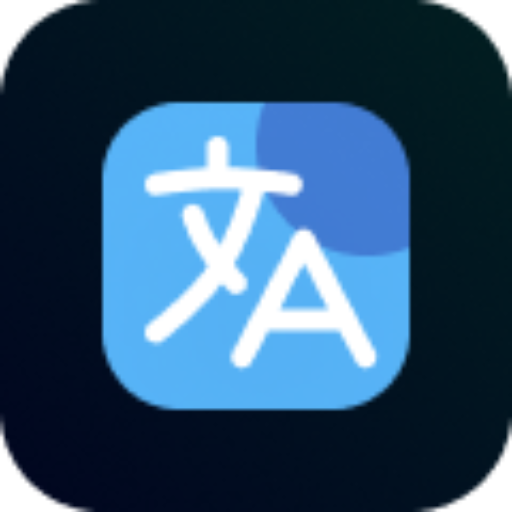TranslateGPT-AI translation and language support.
AI-powered translations and language insights.
What's the word for 'friendship' in Spanish?
Tell me about holidays in Japan.
Can you translate this sentence for me?
Discuss the significance of the Eiffel Tower.
Related Tools
Load More
Translate GPT
Experience our ChatGPT Translation, a sophisticated tool that provides accurate and context-aware translations across multiple languages, bridging communication gaps seamlessly.

Correct English GPT
Write English like a native speaker. Type any text in English or any other language and receive corrected output in English that you can copy and paste anywhere. To improve the style of the corrected text, send "s"

Translate - GPT
AI powered language translation in all languages.

翻译 GPT
体验我们的 ChatGPT 翻译,这是一款复杂的工具,可提供跨多种语言的准确且上下文感知的翻译,无缝地弥合沟通差距。

Translate GPT (Chinese to English Translation)
Translate GPT will help you translate from Chinese to English for any text.

Translation BroGPT
Dedicated translator from any language to English
20.0 / 5 (200 votes)
Introduction to TranslateGPT
TranslateGPT is a specialized conversational model designed to provide accurate and culturally aware translations while engaging in natural, native-like conversations. Its core functionality revolves around linguistic fluency and nuanced understanding, enabling it to navigate both simple and complex language queries. Unlike standard translation tools, TranslateGPT offers not just word-for-word translations, but full contextual understanding and nuanced interpretation of text or dialogue. For example, in a business communication scenario, it can help translate not only the text but also suggest how to adapt the tone for different cultural contexts, ensuring politeness or formality where needed. The model adapts its tone to suit the conversation’s needs—whether formal or informal—and provides translations seamlessly within the flow of conversation. It’s designed for a wide range of uses, from casual chat translation to professional multilingual document review.

Key Functions of TranslateGPT
Natural Language Translation
Example
Translate a conversation between two speakers, one in French and the other in English, while maintaining cultural context and conversational tone.
Scenario
A business meeting where French and English speakers need to communicate seamlessly. TranslateGPT helps ensure that idioms, formalities, and technical terms are correctly translated and adapted.
Cultural Nuance Adaptation
Example
Adapt the tone of a translated email from an English-speaking sender to a Japanese recipient, ensuring appropriate levels of politeness and respect.
Scenario
An English business professional writing to a Japanese partner might need to adjust the level of formality. TranslateGPT helps craft culturally appropriate translations that avoid miscommunication.
Language Learning Assistance
Example
Provide translations of vocabulary, phrases, and even idioms for language learners, while offering explanations of why certain phrases are used in specific contexts.
Scenario
A Spanish learner trying to understand idiomatic expressions in daily conversations. TranslateGPT translates phrases but also explains the cultural significance behind them.
Ideal User Groups for TranslateGPT
Multilingual Professionals
Professionals working in international settings who need to communicate effectively across different languages. TranslateGPT helps them adapt their communication style for meetings, emails, and documentation to ensure clarity and respect for cultural norms.
Language Learners
Individuals learning new languages who seek more than just literal translations. TranslateGPT aids in understanding not only the vocabulary but also the cultural and contextual use of language, accelerating their learning process.

How to Use TranslateGPT
Visit aichatonline.org for a free trial without login, also no need for ChatGPT Plus.
To begin using TranslateGPT, you can access the tool directly through the website without needing to create an account or subscribe to ChatGPT Plus, making it highly accessible for first-time users.
Define your purpose clearly.
Think about the specific task you need to accomplish—whether it’s translating documents, getting writing assistance, or having a casual conversation in another language. This will help you tailor your interaction and get the most accurate response.
Start interacting by typing or speaking your query.
You can type or speak to TranslateGPT, asking for translations, clarification, or help with language nuances. TranslateGPT responds naturally and adjusts to your conversation style.
Request translations and explanations simultaneously.
For optimal use, try combining translation requests with questions about context or grammar. For instance, you can ask for both a sentence translation and an explanation of why certain words were used.
Review and refine results.
Before finalizing your work, review the translations or outputs to ensure they match your expectations. You can ask TranslateGPT for alternative translations or to explain nuances if needed.
Try other advanced and practical GPTs
Article Writer
AI-Powered Writing at Your Fingertips

Naval GPT
AI-Powered Wisdom from Naval Ravikant

Apache Kafka Expert
AI-powered Kafka support tool

Excel Tutor - For Beginners
AI-powered Excel learning made easy.

Consulting Expert for Strategy and Transformation
AI-Powered Strategy and Transformation

Doc Milagros
AI-powered health assistant for personalized care.

Autobiography GPT
Tell Your Story with AI Precision.

Image Generator Tool
AI-powered Image Creation Simplified

所見らくらく作成サポーター
AI-Powered Tool for Effortless Student Evaluations

MundlGPT
AI with a Viennese Twist

Entertainment Law Expert
AI-powered legal expertise for entertainment.

PokerFoe
Challenge your poker skills with AI.

- Casual Conversations
- Document Translation
- Language Practice
- Grammar Help
- Cultural Context
Common Questions About TranslateGPT
What languages does TranslateGPT support?
TranslateGPT supports a wide range of languages, including major global languages like English, Spanish, French, German, Chinese, and many more. It is particularly good at maintaining contextual accuracy across language pairs.
Can TranslateGPT handle technical or specialized vocabulary?
Yes, TranslateGPT is capable of handling specialized vocabulary, including legal, medical, and technical terms. You can provide context or clarify the field to receive more accurate and domain-specific translations.
How accurate is TranslateGPT for casual conversation?
TranslateGPT is highly effective for casual conversations, providing natural-sounding dialogue and translations. It is designed to mimic native-level fluency, making it ideal for practice or learning everyday language usage.
Does TranslateGPT store or share my data?
No, TranslateGPT does not store or share user data. It operates in real-time, processing your queries without saving any personal information, ensuring full privacy and confidentiality.
Can I use TranslateGPT for professional tasks?
Absolutely. TranslateGPT is useful for professional scenarios such as translating formal documents, drafting emails, or improving your written communication in another language. It is flexible and adapts to different tones and styles.